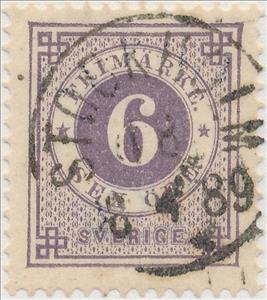Stamp: Circle type - perf 13½, posthorn on back (Sweden 1886)
Circle type - perf 13½, posthorn on back (Sweden 1886)
19 March (Sweden ) within release Blue posthorn on back goes into circulation Stamp Circle type - perf 13½, posthorn on back face value 6 Swedish öre
| Stamp Circle type - perf 13½, posthorn on back in catalogues | |
|---|---|
| Michel: | Mi: SE 33a |
| Stamp Number: | Sn: SE 44a |
| Stanley Gibbons: | Sg: SE 33a |
| Facit: | Fac: SE 44a |
Stamp is vertical format.
Stamp Circle type - perf 13½, posthorn on back it reflects the thematic directions:
A number is a mathematical object used to count, measure, and label. The most basic examples are the natural numbers 1, 2, 3, 4, and so forth. Numbers can be represented in language with number words. More universally, individual numbers can be represented by symbols, called numerals; for example, "5" is a numeral that represents the number five. As only a relatively small number of symbols can be memorized, basic numerals are commonly organized in a numeral system, which is an organized way to represent any number. The most common numeral system is the Hindu–Arabic numeral system, which allows for the representation of any non-negative integer using a combination of ten fundamental numeric symbols, called digits. In addition to their use in counting and measuring, numerals are often used for labels (as with telephone numbers), for ordering (as with serial numbers), and for codes (as with ISBNs). In common usage, a numeral is not clearly distinguished from the number that it represents.

